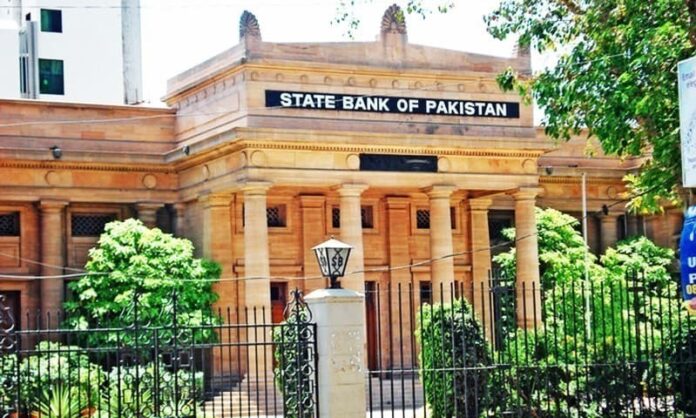KARACHI: Analysts are surprised over the sudden move of the State Bank of Pakistan (SBP) for revising Cash Reserve Requirement (CRR) and they termed the measures to control overheating in the economy.
Analysts at Topline Securities said that in a sudden move, Pakistan Central Bank, SBP raised the Cash Reserve Requirement (CRR) by 1 per cent for banks.
This monetary tool is not frequently used in Pakistan as SBP frequently uses its Policy Rate to tighten or loosen monetary policy.
According to a press release issued by SBP on Saturday (November 13, 2021), average CRR to be maintained during a period of two weeks by scheduled banks, has been increased from 5 per cent to 6 per cent and minimum CRR to be maintained each day from 3 per cent to 4 per cent.
CRR is the amount of money that banks are required to keep with SBP and is applicable on demand and time liabilities (DTL) of less than a year. According to SBP data as of Jun 30, 2021, Pakistan DTL of less than one year is close to Rs17 trillion.
This 1 per cent rise will affect liquidity of banks by Rs150 to 170 billion as CRR requirement was estimated at around Rs890 billion.
After this move by SBP, CRR requirement will increase to over Rs1 trillion. We believe this is another tool used by SBP to tighten the monetary policy to control aggregate demand.
Earlier on September 20, 2021 SBP raised the policy rate by 25bps to 7.25 per cent. Since then yields in secondary markets are up by 126bps as yields on 6month T-Bill and 3-Year PIBs have increased to 8.9 per cent & 10.3 per cent, respectively. This is indicating that markets are expecting further rise in policy rate in November end Monetary Policy meeting.
According to SBP, this has been done to moderate money supply growth and domestic demand. This will help sustain current economic recovery, achieve the government’s medium-term inflation target, and reduce pressures on PKR as per SBP.
Just to recall money supply in Pakistan has grown by 16 per cent on average in 2021 to date. This is higher than last 8-year average M2 growth of 13-14 per cent.
Above-average M2 growth is led by increased government borrowing from banks, rising private sector credit and increasing remittances. This will also result in lower aggregate demand and help in controlling imports and current account deficit.
The SBP has already taken several measures to address concerns on rising external account concerns and increasing aggregate demand. This include measures to curb undesirable foreign currency outflow, 100 per cent cash margin requirement on import of certain products and stringent regulations on auto financing.
The SBP is hopeful that banks will also offer better returns to depositors in order to increase deposit mobilization to cater to increased liquidity requirements. “We are of the view that this measure may slowdown loan growth and banks may not opt for aggressive deposit mobilization at the expense of higher deposit rates,” the analysts said.
After this 1 per cent additional CRR, banks will either reduce their investment or/and reduce lending or will use the Open Market Window Operation (OMO). To recall, SBP and government were also promoting lending by Banks as SBP had given a target to banks to lend at least 5 per cent of their private sector lending for housing by Dec 2021. Government had also introduced increased taxation for banks falling below a 50 per cent advance to deposit ratio (ADR).
After this measure it will be interesting to see the participation and result of upcoming T-Bill auction scheduled on 17th November, 2021. We expect less participation of banks and participation at higher rates.
Local banks profits will also be affected due to this measure. As mentioned earlier 1 per cent increase in CRR will result in Rs170 billion of liquidity going to SBP. This Rs170 billion if invested in T-bill could have yielded Rs10 billion in after tax profits. Thus, after-tax profits of banks will be affected by ~4 per cent as we expect Banks in Pakistan will make net profit of R275 billion to Rs290 billion in 2021. However, further tightening means that local interest rate may increase more than our expectations. If that happens then banks’ earnings going forward will be much higher than our initial expectations.



